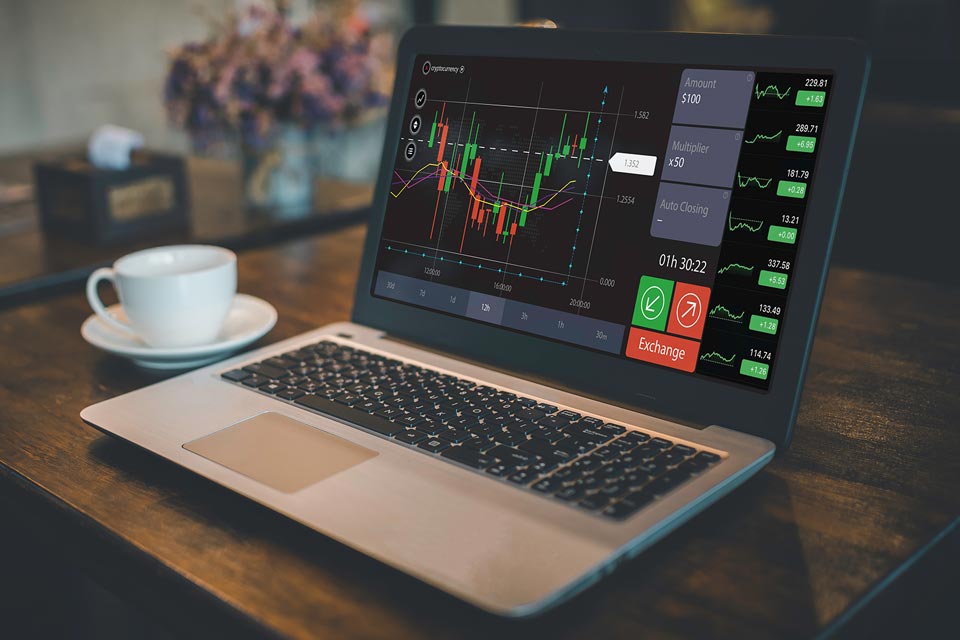Market and Limit orders help execute automatic trading transactions, as per your trading preferences. In this article, we discuss market order vs limit orders in-depth.
What is a Market order?
A Market order placed to buy or sell a currency pair or CFD at the best available price. While the order is executed as soon as possible, prices are constantly changing so the entry point can change The primary purpose behind setting a market order is to enter or exit the trade as soon as the best price is available. When the trader places a market order with a broker, the system provides the trader with the lowest available price while placing a long or buy order. On the other hand, the system provides the trader with the highest available price while placing a short or sell order.
Pros and cons of Market order
Pros
- Helps execute orders immediately at the best available price.
- Supports dollar-cost averaging, a type of investment strategy used for dividing the total trading amount across different timeframes. This reduces volatility risks as orders are executed at different times and prices, but the trading amount is kept fixed.
- Allows trade execution as long as there are buyers and sellers for the currency pair.
Cons
- No assurance about the price at which the trade will be executed.
- If you trade a significant amount of the currency pair during a low trading volume, your order itself could be the reason to move the currency pair prices up or down. This will lead to an order execution at a price that isn’t close to the actual market price.
- If the forex trading day has ended, it is risky to place a Market order as the open prices on the next trading day could be significantly different from the prices the currency pair closed at.
What is a Limit order?
A Limit order is an automatic order placed to execute the trade at a specific price. A buy limit order is always executed at the specified limit price or lower, and a market sell limit order is always executed at the specified limit price or higher. Take a look at buy limit vs sell stop orders for a more in-depth understanding. Unlike market orders, limit orders do not assure trade execution, but gives the investor greater control over the price at which the trade will be executed.
Pros
- Control over the price at which the trade should be executed
- Option to place conditional orders like fill or kill, stop-loss, and stop-limit
- Place orders before or after the market hours
Cons
- Limit orders are not always executed if the set price is not met.
- Chances of partially unfilled orders when a part of your order meets the specified price, but the other part does not.
- Higher brokerage fee, making the transaction costs higher since Limit orders require more effort and technical analysis.
Market order vs Limit order: Key differences
Here are the top Limit order vs Market order differences:
Trade Execution
A market order is an order to buy or sell an asset immediately, placing a trade execution at that time for the best available price. This contrasts with limit orders, which are orders to buy or sell an asset at a price set, irrespective of whether the order is executed or not.
Control
Market orders provide traders full control over the trade size and no control over the price. On the other hand, Limit orders provide traders with full control over the currency pair’s trading price and no control over the trade size.
Market volatility and liquidity
Market orders are more sensitive to liquidity as a liquid market ensures that trade orders are always executed, whereas an illiquid market may lead to a failed market execution. But Market orders are not very sensitive to volatility as they have nothing to do with the currency pair’s fluctuating prices. Limit orders are more sensitive to volatility as a volatile market means that the currency pair prices are dramatically fluctuating, which could lead to a failed or partial trade execution. On the other hand, a less volatile market makes it easier to set the price of their choice and wait for the order to be executed. Limit orders are also sensitive to market liquidity since a liquid market provides a more significant opportunity for traders to complete trades at the desired price, whereas an illiquid market makes it tough for prices to reach the desired level.
Order information
A Market order only needs to specify the trade quantity while placing a buy or sell order. But, a Limit order needs to specify the trade quantity and price while placing a buy or sell order.
Live market price
With a Market order, each trade is executed at the live market price. Whereas, with a Limit order, each trade is executed at the specified price, which may or may not be equal to the live market prices.
Market order vs Limit order: Which is better?
Both Market and Limit order types are beneficial in their own ways. You can place a Market order when you want to quickly execute a long or short order and place a Limit order when you want to buy or sell a trade at a specific price. Blueberry is a leading global trading platform that can help traders employ several such orders and place successful trades. Sign up for a live trading account or try a demo account.




